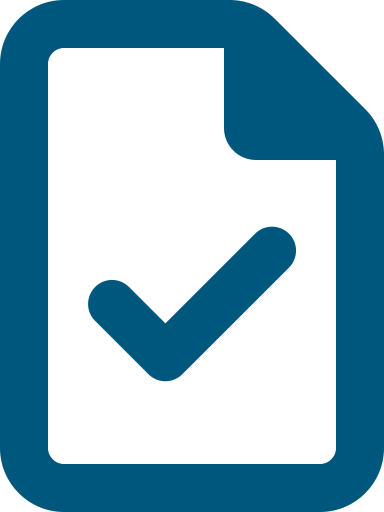We are a strong supporter of the 2025 April Falls campaign – Falls Prevention is Everyone’s Business. April Falls Month raises awareness about falls and promotes the latest best practice strategies to prevent falls.
Fall facts:
- In Australia, around one in 4 people aged over 65 have at least one fall a year.
- Falls are the leading cause of injury resulting in hospital admissions in this age group. They are also the leading cause of death (AIHW, 2022).
- Research shows that many falls in older people are preventable (CEC, 2023).
- Preventing falls is complex. There are usually multiple risk factors that increase an older person’s risk of falling. So, it takes multiple targeted interventions (actions or strategies) to reduce their falls risk.
What is a fall?
The World Health Organization (WHO) defines a fall in an older person as "an event that results in a person coming to rest inadvertently on the ground or floor or other lower level".
The WHO definition of a fall is an internationally accepted definition which has been successfully implemented across the world.
The Australian Commission for Safety and Quality in Health Care adheres to this definition of a fall - this includes slips, trips, loss of balance and rolls out of bed. These events may be witnessed or unwitnessed.
A fall without injury is still a fall. A fall onto a lower surface, no matter the distance to that surface, or the nature of that surface, is still a fall.
Aged care providers are responsible for identifying and responding to falls. You need to make sure that when an older person has had a fall, you care for them in a responsive and timely way. You should tailor this care to the older person’s needs, goals and preferences.
Preventing falls
Most falls can be prevented. Poor balance and strength are 2 factors that affect a person’s mobility and increase their risk of a fall. By improving balance and strength, people can reduce their risk of falling and getting a fall-related injury. Research shows that exercise of any type reduces the risk of falling by 23%.
Providers play an important role in preventing falls. The most effective approach you can take to preventing falls includes:
- working with older people, their family and carers to identify:
- the older person’s fall risk factors
- how they feel about being mobile and the risk of having a fall
- possible barriers to exercise, such as fear of falling
- using validated falls risk screening and assessment tools to:
- identify risk factors
- develop a personal, evidence-based falls prevention plan
- doing regular and ongoing reviews of an older person’s falls prevention plan, including when their circumstances, needs and preferences change. (Note that some things meant to reduce the risk of falling, may increase falls and other risks if:
- they’re not used properly
- the older person’s circumstances change
- involving a range of health professionals to develop, apply and review ways to prevent falls. It’s important to involve physiotherapists, occupational therapists, podiatrists and exercise physiologists when you develop a falls prevention plan for older people who:
- have unique circumstances, for which there is no evidence-based guidance available
- fall repeatedly
- developing and following effective governance processes, policies and procedures based on current falls guidelines. These can support staff and older people to put falls prevention strategies into practice.
Preventing falls and the strengthened Aged Care Quality Standards
Under the strengthened Aged Care Quality Standards (Standard 5 Clinical Care, Outcome 5.5, Clinical Safety, Action 5.5.4 Falls and mobility , and in partnership with older people, providers need to have processes to reduce falls and harm from falls. You need to do this by:
- supporting people to move as much as possible to prevent loss of physical abilities
- delivering effective and timely care after a fall
- monitoring falls and injuries to understand why they happened and what the consequences are.
Incident management systems (as per Standard 2 The Organisation, Outcome 2.5 Incident Management) support you and your workers to accurately record and report falls to look after older people in your care.
It’s important that you educate your workers about these systems to prevent, recognise and respond to falls. This includes reporting all falls – with and without injury, and from any height (including rolls out of bed). A fall from any height, even onto a soft surface (such as a crash mat), could injure or harm a frail older person.
You must report falls and major injuries under the National Aged Care Mandatory Quality Indicator Program (QI Program). The Department of Health and Aged Care needs this reporting to monitor trends and improve quality of care.
More information
This year, the April Falls campaign goal is ‘to make use of all available resources to reduce falls risk, get active and improve balance for fall prevention’. Visit the NSW Fall Prevention and Healthy Ageing Network for April Falls 2025 resources.
The Australian Commission on Safety and Quality in Health Care (ACSQHC) is updating the Best Practice Guidelines for Preventing Falls and Harm from Falls in Older People (Falls Guidelines). For information about when the Falls Guidelines will be released, visit the ACSQHC falls prevention page.
Further information
Australian Commission on Safety and Quality in Health Care (ACSQHC), Guidebook for preventing falls and harm from falls in older people: Best practice guidelines for Australian residential aged care facilities, 2009
Australian Institute of Health and Welfare (AIHW), Falls in older Australians 2019–20: hospitalisations and deaths among people aged 65 and over – Summary, 2022.
Clinical Excellence Commission (CEC), NSW Health Fall prevention in NSW, Sydney, 2023.
Victorian Department of Health, Falls
World Health Organization, Falls factsheet, April 2021






